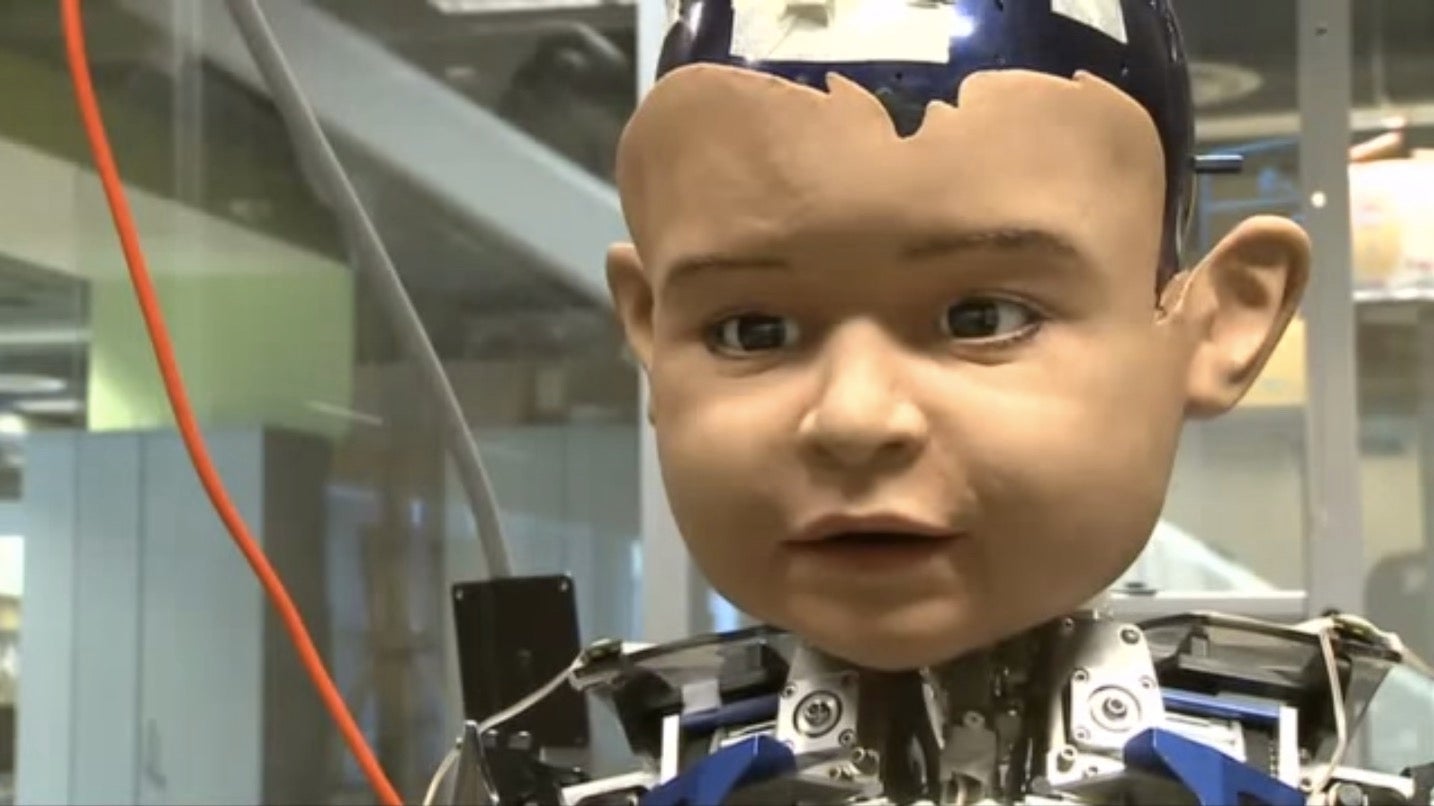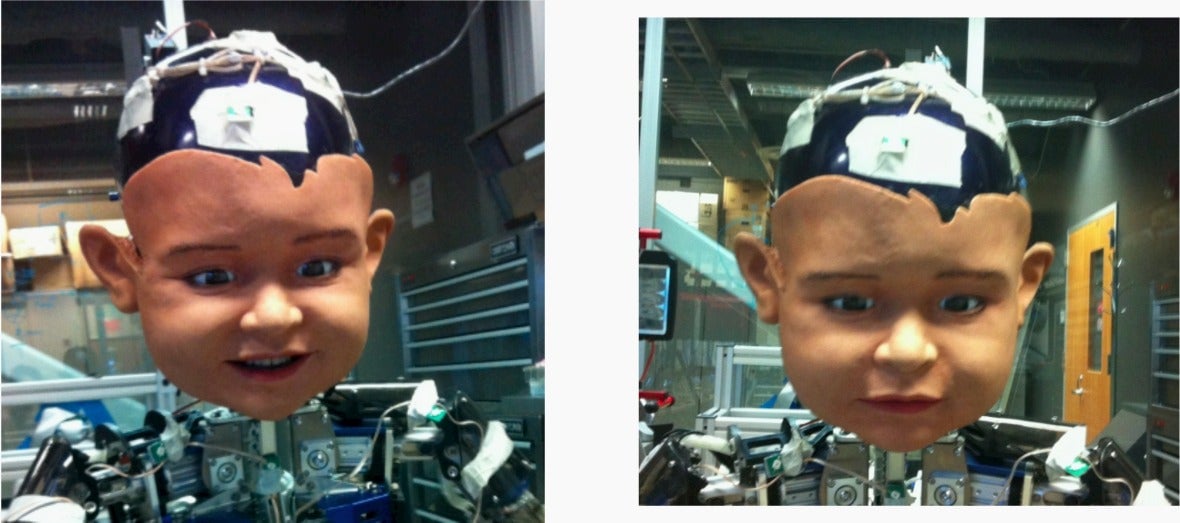A terrifying robot baby is teaching scientists about baby feelings
Robots that look sort of like humans are generally more likely to inspire feelings of profound unease than tenderness, but that hasn’t stopped researchers at the University of California, San Diego (UCSD), from using a toddler-sized robot to figure out how babies use a smiling “strategy” to pull their parents’ strings.


Robots that look sort of like humans are generally more likely to inspire feelings of profound unease than tenderness, but that hasn’t stopped researchers at the University of California, San Diego (UCSD), from using a toddler-sized robot to figure out how babies use a smiling “strategy” to pull their parents’ strings.
The robot, called Diego-san, was developed by the robotics firms Hanson Robotics and Kokoro for UCSD back in 2013. Diego is now being used by researchers to determine how babies get their mothers to smile at them so often.
The researchers had the robot interact with adults after gathering data from how real mothers and babies played “smiling games” together. Observing 13 pairs of mothers and babies, they timed how long each of them spent smiling when they were together, and noted exactly when each mother and baby started and stopped smiling. As detailed in a study published Sept. 23 in the scientific journal PLOS ONE, the researchers found that by 4 months old, “mothers consistently attempted to maximize the time spent in mutual smiling, while infants tried to maximize mother-only smile time.” Basically, the kids got their mothers to do all the work.

How does Diego figure into the research? The research team took all the data they recorded from the smiling babies, and ported them into Diego. The robot has a facial recognition program that can detect when a person is smiling at it or not. The researchers then had adults interact and play games with Diego, and found that when Diego used the same “smile timing strategy” as the human babies, adults smiled more at the robot than the other way around.
Essentially, the robot was used to apply “control theory”—a concept common in engineering—to the question of how and why a baby convinces a mother to smile. One must wonder, of course, whether humans are likely to react in the same way to an actually cute and beloved human baby child, as to a contraption that looks like an extra from Steven Spielberg’s “A.I.” Quartz reached out to the research team to find out more about the reaction to Diego, and will update this post with any response.
In any case, let’s just hope that when the robot uprising begins, Diego’s large, squishy, smiling face won’t be the last thing we see.